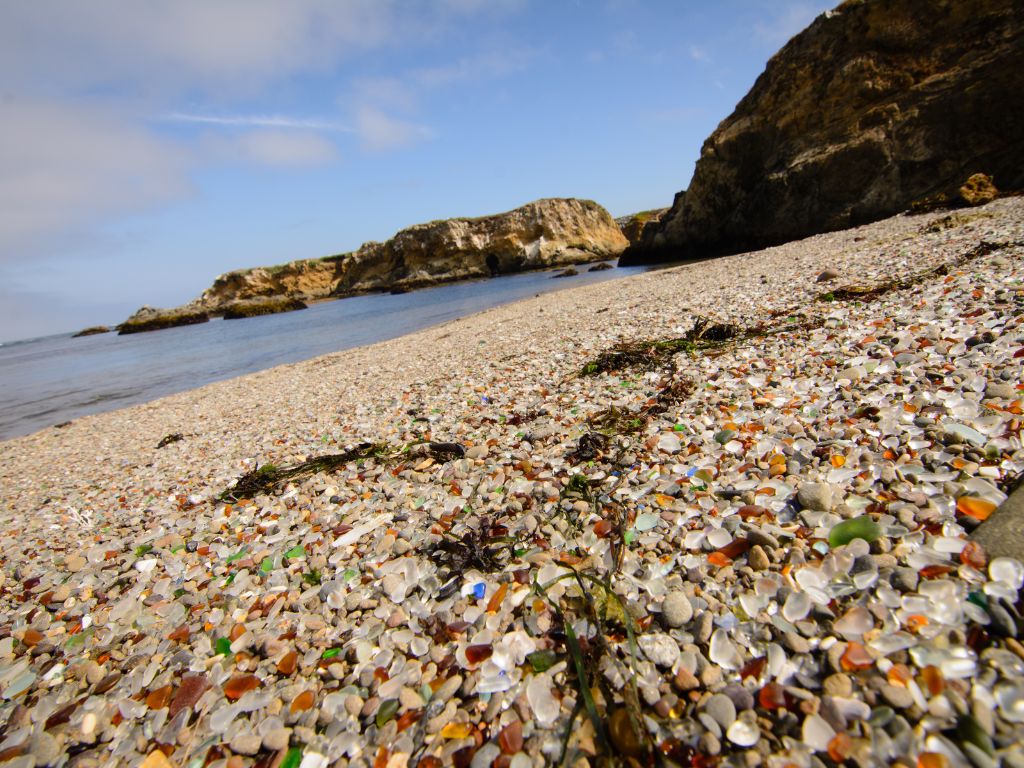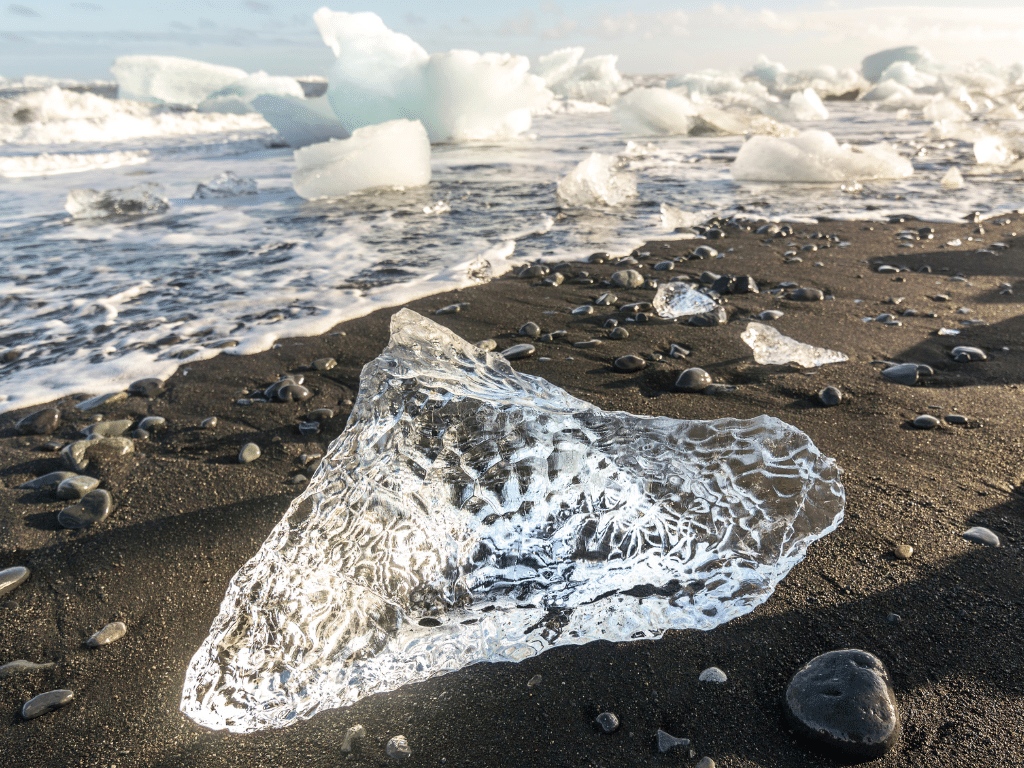Breadcrumbs
Whether we’re travelling at home or abroad, we Aussies love to holiday near the coast. Some of our most beloved holiday destinations are never far from a beach. Whether it’s booking a trip to relax on beautiful Anse Source d'Argent in the Seychelles or partying up on Miami’s South Beach and Rio’s Copacabana, there are all kinds of reasons to plan a beach holiday.
But while many beaches are judged by the colour or fineness of its sand, or possibly its quality of surfing waves, there are some beaches that stand out in truly unique ways. While it may be fun to visit wild coloured beaches like the red beaches of the Galapagos, purple beaches of California, or the green sands of some Hawaiian beaches, there are some other beaches around the world whose uniqueness go far beyond simply sand colour.
Consider a holiday to one of these one-of-a-kind beaches, where a dose of vitamin sea can go a long way to relieving all kinds of stress and ailments. Travel is not always smooth so just remember to purchase travel insurance in case you encounter any unexpected waves during your trip.
Glass Beach, California

It’s generally wise to avoid glass on the beach, but that is exactly what draws people to the aptly named Glass Beach in Fort Bragg, California. Situated in Northern California along the Pacific, Glass Beach is a pebbly beach that contains all kinds of polished glass pieces, ground smooth by the power of the waves.
There was a time when Glass Beach was covered in a deep layer of glass, but years of collecting by tourists have somewhat depleted the resource. Thankfully, there are actually 3 different stretches of glass beaches in Fort Bragg, with the other two lesser known beaches just recently becoming accessible to the public and offer more abundant glass.
The reason for all the glass on Fort Bragg’s beaches is due to the fact they were used as dumps sites for more than 60 years, where broken bottles, vehicles, and various appliances were tossed over the cliffs. Believing the trash would be swept out to sea, the glass had other ideas and simply piled up on shore and now glass of all colours shimmer in the sun to the delight of visitors.
You can access the three glass beaches by way of the Noyo Headlands Coastal Trail. It is illegal to collect glass from the more well-known beach referred to as Glass Beach 3 which lies within MacKerricher State Park, but you are able to take a few souvenirs from the other locations which are referred to as Glass Beach 1 and 2.
Hidden beach, Mexico

Mexico’s Marieta Islands are home to a hidden beach that lies beneath the surface of one of the islands. Referred to by most as Hidden Beach, it also goes by the name Playa del Amor, and exists within a giant crater in the ground.
Looking rather like a smaller version of the Melbourne Cricket Ground, Hidden Beach is sunken beneath the land, the giant hole believed to have been caused by a bomb explosion during the early 20th century. The uninhabited islands were used as a military testing ground by the Mexican government.
Several tour companies run trips from Puerto Vallarta to the Islas Marietas National Park and its Hidden Beach, however visitor numbers are restricted and visitor permits are required. Access to this unique beach is only via a long water tunnel in which you can either swim or kayak in. Once inside the natural beach theatre, you will enjoy plenty of shady areas as well as sun that filters through the hole above.
Maho Beach, Sint Maarten

Maho Beach would simply be just another ordinary beautiful beach offering fine white sand, lined with restaurants and nightclubs, if it were not for it being situated at the end of a runway. The beach is just steps from the Princess Juliana International Airport where planes make their final approach to the airport, flying at altitudes often less than 30 metres above the heads of swimmers and sunbathers.
Maho Beach is found on the island of Saint Martin, unique in itself being divided between two nations which include the Netherlands and France. Maho Beach and the airport exist on the Dutch side of the island known as Sint Maarten.
Many visitors to the beach simply come to feel the jet blasts from aircraft taking off and to have planes fly directly over their heads at such a close distance. So popular are the planes that beachside restaurants display the arrival and departure times daily.
While there are signs warning that the closeness of aircraft can result in serious injury or death, Maho Beach is quite safe so long as you abide by safety precautions, staying within the marked safe zones and well away from any fences.
However, you will want to ensure you secure your beach belongings during takeoffs and landings or risk them being blown down the beach or into the water. Be sure to also bring bags or cases to protect items like cameras and phones from the sand that gets whipped up from the planes.
Diamond Beach, Iceland

We generally think of beaches being warm places where we can strip down to bathers and maybe go for a swim. Along the south coast of Iceland, you’ll find a beach that paints a very different picture, where you are not only prohibited from swimming but also can expect to see a lot of ice.
Often referred to as Diamond Beach, this black sand beach can be found at the famous Jökulsárlón Glacier Lagoon. The water here which is meltwater from nearby glaciers never freezes as it carries large chunks of ice broken off from the glaciers towards the sea.
Many of the ice chunks end up on the black-as-coal beach, making it look like enormous shimmering diamonds sitting on the volcanic sand. The ice chunks come in all kinds of unique shapes and sizes thanks to the natural artistic sculpting abilities of the waves.
Diamond Beach is about a 5-hour drive from Reykjavík and accessible all year round, with many visitors making it a stop as part of a longer road trip along Iceland’s Ring Road tourist route. Note that it is too dangerous to swim at the beach and you should also refrain from climbing on the chunks of ice as they can be unstable and sharp. You may be lucky and spot seals on and near the beach as well as seabirds like terns and skuas.
Hot Water Beach, New Zealand
Looking for a spa experience just metres from the incoming tide? On the Coromandel Peninsula of New Zealand’s North Island, you can create your very own natural hot spring spa bath by simply digging a hole in the sand.
Hot springs exist beneath the beach sand and you can access them by using a simple shovel to dig yourself a hole in the sand a few hours on either side of the low tide period. You may want to test the temperature of your self-created bath and possibly let it cool a bit, since the underground water can be as hot as 60°C.
If you aren’t planning on packing a shovel in your suitcase, you can simply rent a shovel from one of the local cafes or surf shops. Then just head down the golden sand beach to the southern end near the rocks where the underground natural hot springs can be uncovered.
Boulders Beach, South Africa

You don’t expect to share a beach with penguins, but that is exactly what occurs at Boulders Beach just outside Cape Town. Far from the icy chill of Antarctica, African penguins have decided the waters of Southern Africa are more ideal.
These adorable penguins have created a rather large colony near the beach, nesting there and regularly going out for swims to bring food back for their chicks. Thanks to wheelchair-friendly boardwalks, visitors can observe the birds and their many antics at close range.
The penguins are actually most easily viewed around Foxy Beach not far from Boulders, but you are free to swim, picnic, and snorkel at the Boulders Beach section of the coast. Boulders Beach is a lovely beach for families as it is quite sheltered from strong waves and currents.
The granite boulders along the beach are also home to small mammals called hyraxes which are equally as adorable as our beloved quokkas here in Australia.
